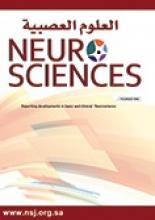Abstract
OBJECTIVE: To evaluate the influence of thoracic spine curvature on lung parameters in kyphoscoliosis.
METHODS: Twenty-one patients with kyphoscoliosis were evaluated at the Vallabhbhai Patel Chest Institute, Delhi, India from January to June 2006 using spirometry, arterial blood gas (ABG), and 6-minute walk test. The degree of spinal deformity was measured by Cobb’s method for angle of scoliosis and angle of kyphosis.
RESULTS: There were 13 males and 8 females (mean age 47.38+/-20.10 years). Decreased lung volumes, hypoxemia, arterial oxygen desaturation, and decreased exercise capacity was observed in patients with kyphoscoliosis. The angle of scoliosis ranged from 60-126 degrees (78.1+/-18.3) and angle of kyphosis ranged from 5-48 degrees (18.05+/-10.5). The forced vital capacity (FVC) was 1.92+/-0.8 L (0.66-3.44), and the forced expiratory volume in one second (FEV1) was 1.51+/-0.5 L (0.6-2.6). The FEV1/FVC was 60.9+/-12.9 (42-86%). The partial arterial oxygen tension was 51.7+/-6.9 Hg. The partial pressure of carbon dioxide in arterial blood was 49.85+/-7.9 mm Hg. The functional oxygen saturation was 84+/-3.7%. No correlation was found between pulmonary function test (PFT) or ABG values with the degree of spinal deformity. Mean oxygen desaturation (87.48-84.43%) and rise in systolic blood pressure (118.48-126.67 mm Hg) during walk test correlated well with degree of spinal deformity.
CONCLUSION: The severity of pulmonary impairment could not be inferred from the angle of scoliosis alone. The 6-minute walk test gives an early indication of limitations and correlates well with structural deformity. The PFT and ABG parameters do not correlate well with the severity of deformity. Thus, the 6-minute walk test must be included in the thorough evaluation of all patients with kyphoscoliosis.
- Copyright: © Neurosciences
Neurosciences is an Open Access journal and articles published are distributed under the terms of the Creative Commons Attribution-NonCommercial License (CC BY-NC). Readers may copy, distribute, and display the work for non-commercial purposes with the proper citation of the original work.






